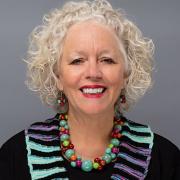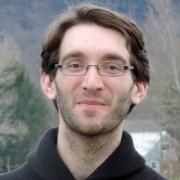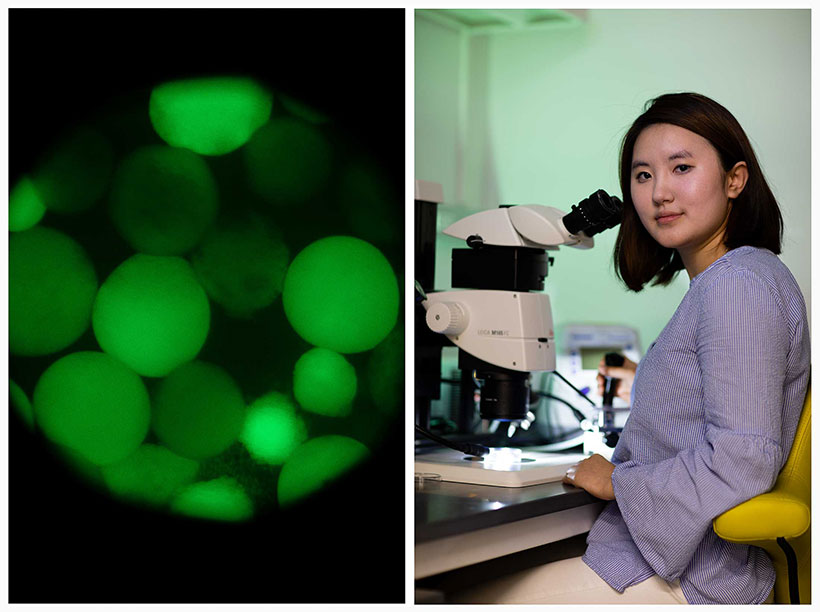Making New Connections at the Mead

The Five Colleges Collection searchable database contains information about cataloged objects from seven museums in the Pioneer Valley of Massachusetts, including Amherst College.
When Emily Potter-Ndiaye learned the Mead Art Museum would be closing with the rest of the campus in March, she made a spreadsheet and a prediction.
The spreadsheet was for figuring out how the Mead’s 23 student employees could keep working for the museum from a distance. And the prediction? That the remote work arrangements would generate an “accessibility boon” for the Mead’s collection online.
“What I’m hoping is that we can develop some resources that will get us not just through the spring, but will also make the Mead’s educational resources more visible and accessible to classes for the years to come,” said Potter-Ndiaye, the Dwight and Kirsten Poler and Andrew W. Mellon Head of Education and Curator of Academic Programs at the museum.
Four weeks later, the Mead has established online work arrangements for its three interns and five museum educators. Even the 15 lobby attendants have been reassigned to help with research, writing, cataloging, video editing and publicity tasks they can complete from home.
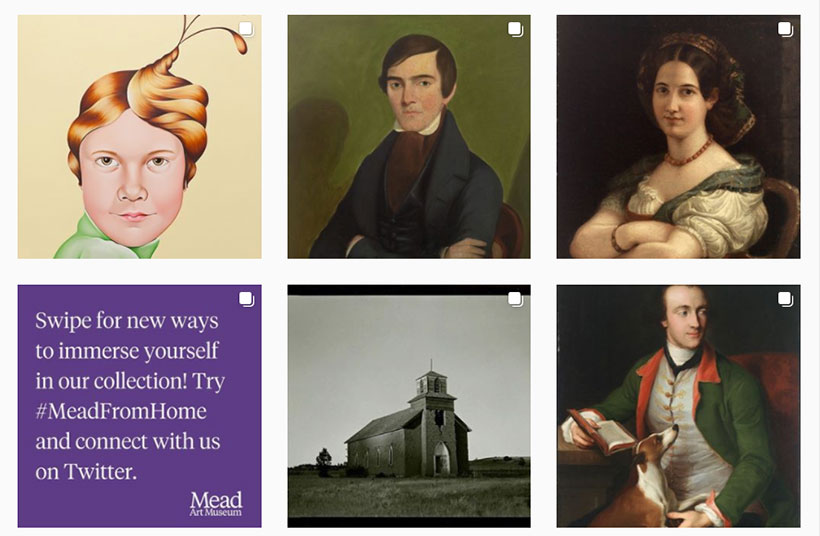
The #MeadFromHome collection invites visitors to reimagine a work of art from the Mead’s collection and submit it for inclusion on the Mead's Instagram @meadartmuseum.
The students who work with the Mead’s public programs and marketing specialist, Danielle Amodeo ’13, are helping promote the new virtual tour and #MeadFromHome Instagram series. And European Print Specialist Miloslava Hruba created the “50 Artwork Challenge” for her team of interns. Each week, they add keywords to at least 50 of the Mead’s 1,800 untitled artworks online.
For example, Boris Grigoriev’s “Untitled,” a whimsical pencil drawing of human figures, was sketched on the back of a colorful handwritten French menu. Knowing this gives the figures sudden context: Aha! Grigoriev must have been drawing the people he observed in a crowded café at lunchtime! But no one who searched the Five Colleges Collections Database could have easily located the work before Annie Martin ’22 added new keywords: “figure, representational - conversation; cafe; alcohol; menu.”
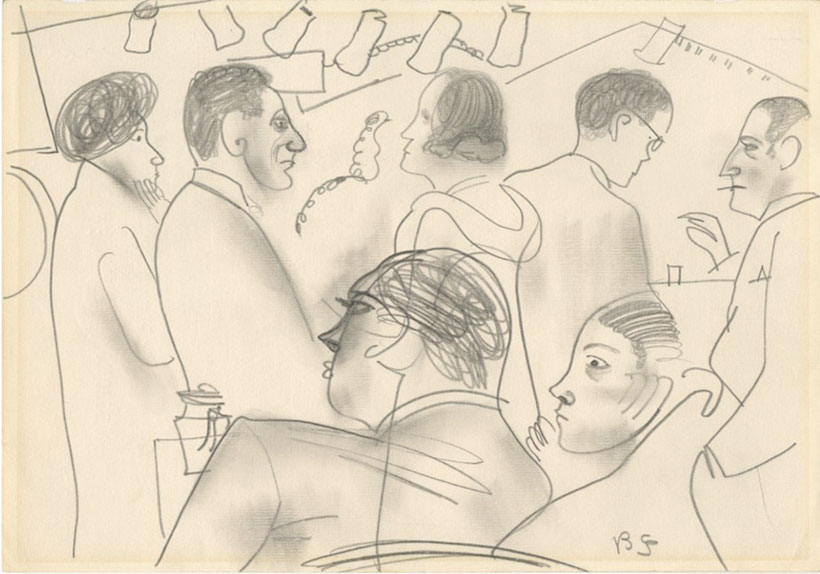
Untitled, a pencil drawing the Boris Grigoriev sketched on the back of a handwritten French menu.
The student interns are also inputting colors as keywords, in support of chemistry professor Chris Durr's recent class in collaboration with the Mead. For example, Bethany Letendre ’22 added to the keywords of Josef Albers 1972 work, "Untitled," these terms: shapes; geometrical; depth; gray; yellow; dimensions; square; gold.
“Some things that were back-burner have become front-burner,” says Potter-Ndiaye, who has enjoyed “nerding out on museum education” with her students. “We’re trying to reflect on what we are learning from this [time of social-distancing],” she says, “and not just what we are losing from it.”—Mary Elizabeth Strunk
